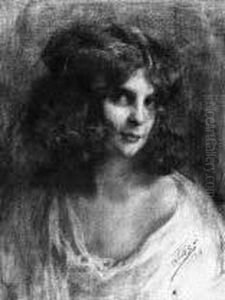Italo Josz Paintings
Italo Josz, born in 1885 in Milan, Italy, was a multifaceted artist whose career spanned across painting, sculpture, and graphic design. His early life was marked by a profound engagement with the cultural and artistic movements of his time, notably Art Nouveau and later, Futurism, which significantly influenced his stylistic development. Josz's upbringing in Milan, a hub for avant-garde art in Italy, provided him with the fertile ground to explore and refine his artistic talents.
Josz's education in the arts was comprehensive, encompassing studies at the Brera Academy in Milan, where he was exposed to the works of Italian masters and contemporaries. This period was crucial in shaping his artistic vision, which began to lean towards an innovative blend of traditional Italian art with modernist twists. His works, characterized by dynamic compositions and a bold use of color, showcased his ability to transcend conventional boundaries and anticipate the evolving trends of 20th-century art.
Throughout his career, Italo Josz remained an active participant in the Italian art scene, contributing to exhibitions and engaging with artistic circles that propelled forward the discourse on modern art in Italy. His contributions were not limited to visual arts alone; Josz was also involved in the design of posters and graphic materials, which echoed the burgeoning movement of Italian Futurism, emphasizing speed, technology, and industrial progress.
The outbreak of World War I and the subsequent political upheavals in Italy had a profound impact on Josz's work, infusing it with a sense of urgency and a reflection on the human condition amidst technological and societal transformations. Despite these challenges, he continued to produce art that resonated with the complexities of his time, earning him a place among the notable Italian artists of the early 20th century.
Italo Josz's legacy is marked by his versatility and foresight in embracing the changes that defined the art world during his lifetime. His death in 1943 marked the end of a career that had navigated through some of the most tumultuous periods in European history, leaving behind a body of work that continues to be celebrated for its innovative approach and historical significance.
